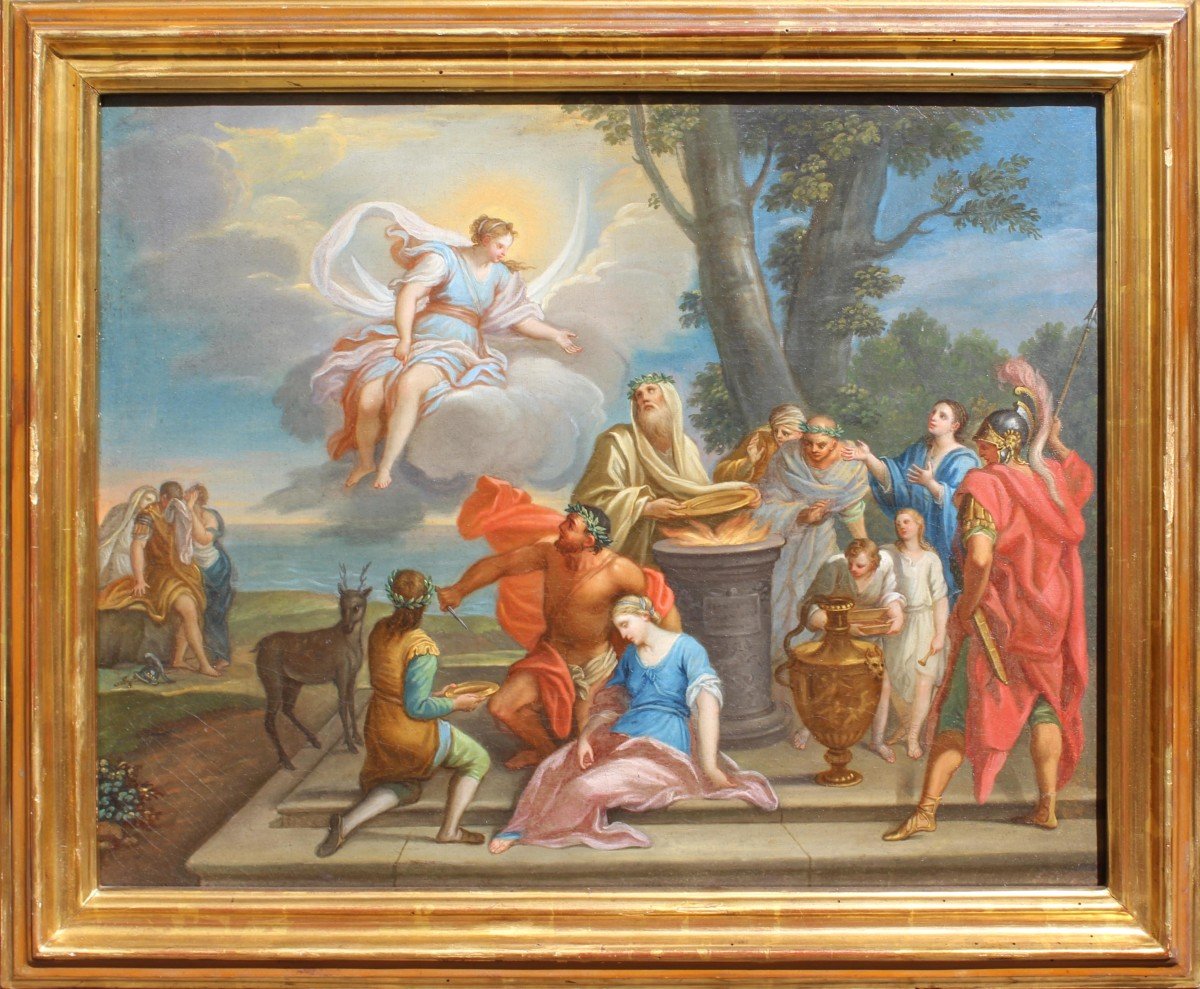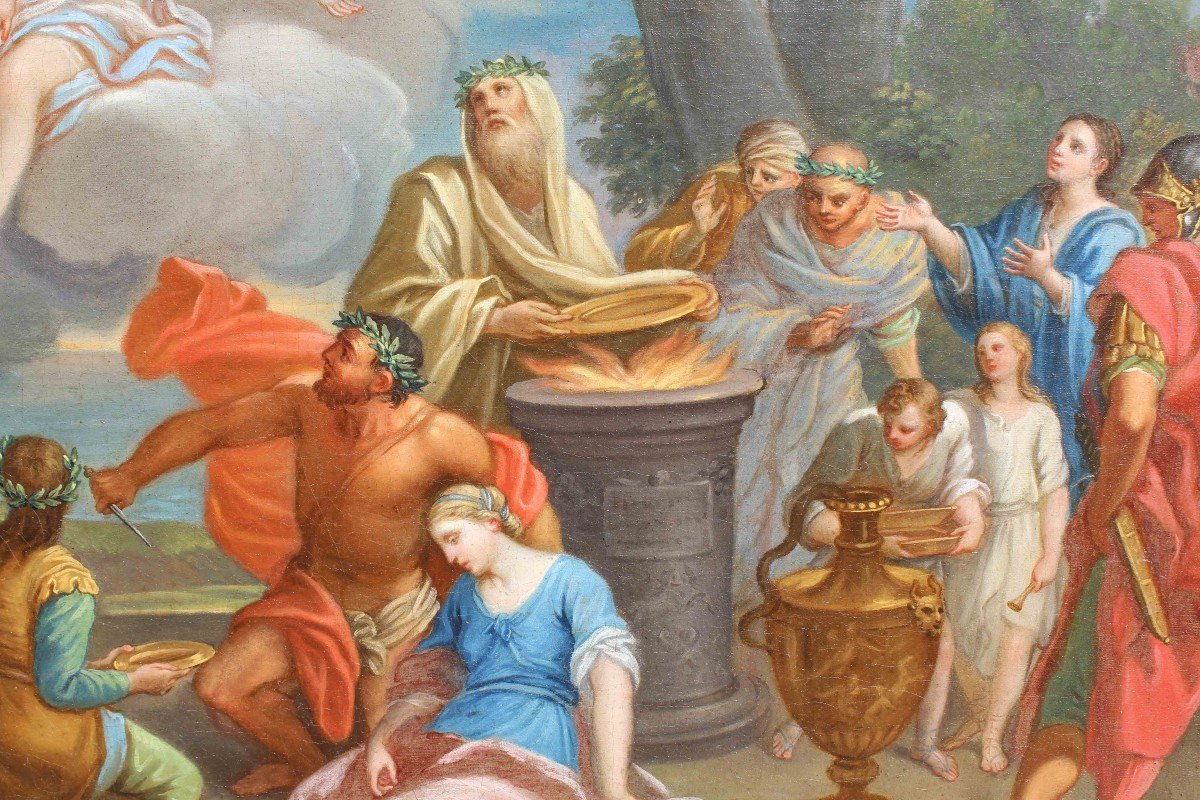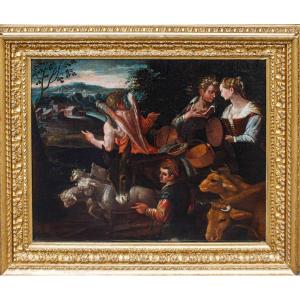The sacrifice of Iphigenia
Oil on canvas, 50 x 64.5 cm
The canvas represents The Sacrifice of Iphigenia, a theme reported by many sources, including the Greek tragedies Iphigenia in Aulis by Euripides and Agamemnon d 'Aeschylus, as well as in Ovid's Metamorphoses. The myth tells of how the Greeks, under the command of Agamemnon, gathered in the town of Aulis, in Boeotia, from where they then set sail for Troy. The persistent calm of the winds, however, prevented Greek ships from taking to sea and the forced stay of the armies in the city favored the spread of an epidemic. Discontent is rampant and Agamemnon's authority is weakening. The king then questions the Soothsayer Calcante to gain insight into what to do. The latter reveals to him that the difficult situation is the result of Artemis' anger towards Agamemnon himself, guilty of having killed, during a hunt, a doe dear to the goddess. The only way out of the impasse - continues Calcante - is to sacrifice Iphigenia, daughter of Agamemnon, to Artemis. The chief of the Greeks accepts and makes sure that the young girl, accompanied by her mother Clytemnestra, reaches Boeotia: to make travel mother and daughter Agamemnon, lying, lets them know that Achilles asked Iphigenia in marriage. Upon Iphigenia's arrival in Boeotia, Agamemnon's deception is soon revealed, but the young girl nevertheless agrees to sacrifice herself to allow the Greek army to reach Troy.


















































 Le Magazine de PROANTIC
Le Magazine de PROANTIC TRÉSORS Magazine
TRÉSORS Magazine Rivista Artiquariato
Rivista Artiquariato